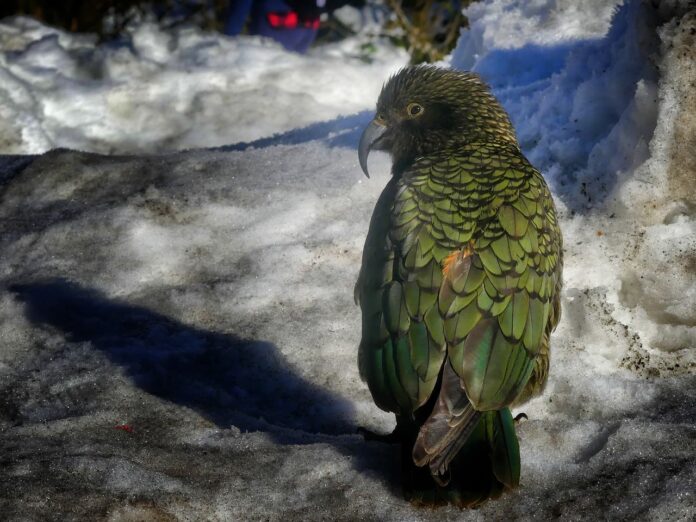We all think that all parrots are adorable and bright, who knows that something like a kea parrot exists? Everything about this parrot species is on the opposite side of the family, and there are many interesting facts about them. From the appearance to the habits and more, this parrot is truly one of a kind. Let’s find out and let me know which fact you find the most fascinating.
1Appearance
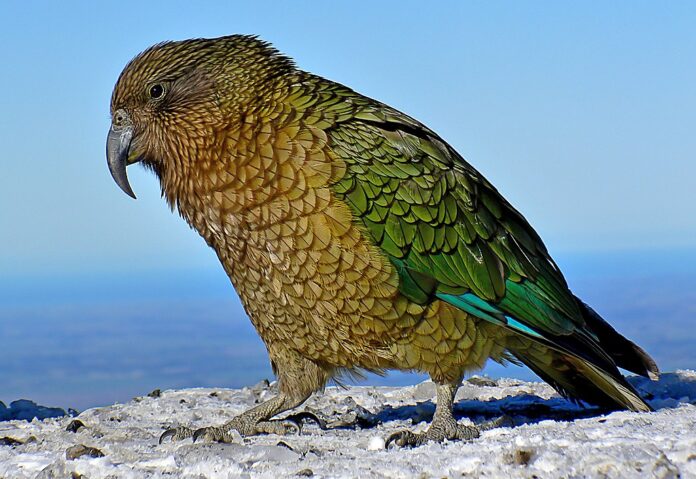
Kea parrots are large parrots that grow up to around 50-55 centimeters, with a striking appearance. The overall color of the bird is olive green, and the color under the wings is bright orange. Some kea parrots also have a beautiful royal blue on the top of the surface of each wing. When this parrot flies, the brilliant underwing color looks absolutely stunning. On the sides of the face are dark olive-brown feathers while the back and rump feathers are orange-red.
As a large bird, it also has a large beak with the upper beak being curved and narrow. This beak assists the bird in breaking open hard food sources like pine cones and walnuts with ease. More than that, its beak is also strong enough to remove bark from trees to expose hiding grubs and insects underneath. This parrot species is zygodactyl, meaning it has 4 toes on each foot. Two toes point forward and the other two point backward which allows them to manipulate objects and move around quickly.
2Behavior
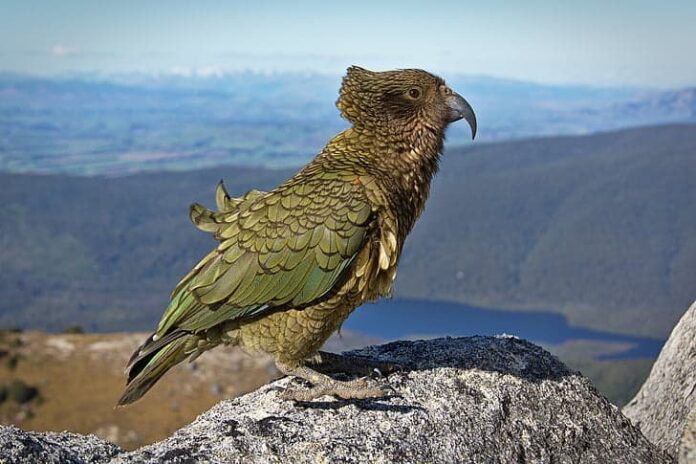
Kea parrots are social so they live in a group of up to 13 members, and they are polygynous, with one male mating multiple females. In captivity, a kea parrot does not do well by itself because they belong in nature not as pets. But in nature, they are well-adapted to harsh environments which allows them to thrive in areas where other organisms cannot survive. With their large wingspan of 52 centimeters, kea parrots can make swift aerial maneuvers while flying at great speeds.
Besides the unique appearance, kea parrots are also known for their curiosity and intelligence; just like most parrots. These birds can solve logical puzzles like pulling and pushing things in a certain order to get to the food. At the same time, they also can work together as a team to achieve a common goal set for them. Their curiosity and fearlessness of humans somehow cause trouble to people, especially hikers skiers, or tourists. They will investigate backpacks, boots, and even cars, often causing damage or flying off with smaller items. One kea parrot once made off with a tourist’s passport while others like to snatch wallets and other things.
3Feeding & Habitats
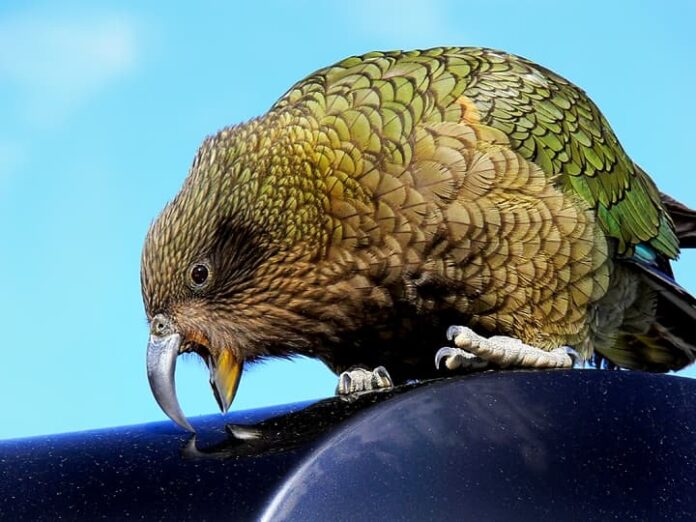
Since they are omnivorous birds, they feed on berries, insects (beetle larvae, grasshoppers, etc.), leaves, nectar, other birds, and roots. It has been observed that they break open bird nests to feed on chicks. These parrots also attack and feed on mice and rabbits if the opportunity allows which is quite scary. So what would be the most fascinating thing about a kea parrot? The fact that it feeds on carrion strikes as a surprise because this is clearly an opposite trait for parrots. In fact, they enjoy flesh and bone marrow from carcasses.
The most shocking part is that kea parrots were once killed for bounty because they attacked livestock, especially sheep. It began in the mid-1860s when sheep farmers started noticing unusual wounds on the loins or sides of the sheep. A kea parrot attacked sheep by using its powerful beak and claws to rip through the layer of wool. Then it would eat the fat from the back of the animal, and these birds do so when food is scarce in winter. That was extremely gruesome, and the sheep farming community was very concerned. It was believed that these parrots also do the same thing to dogs and even horses.
Kea parrots are endemic to New Zealand, ranging from coastal forests to lowland river valleys. In fact, this bird is the only parrot species that live in the alpine region of the country. Their favorite nesting spots are beech forests on South Island’s West Coast and mountain forests in the Southern Alps. It is also common to see them in mountains in Kaikoura which is in the far east.
4Predators & Threats
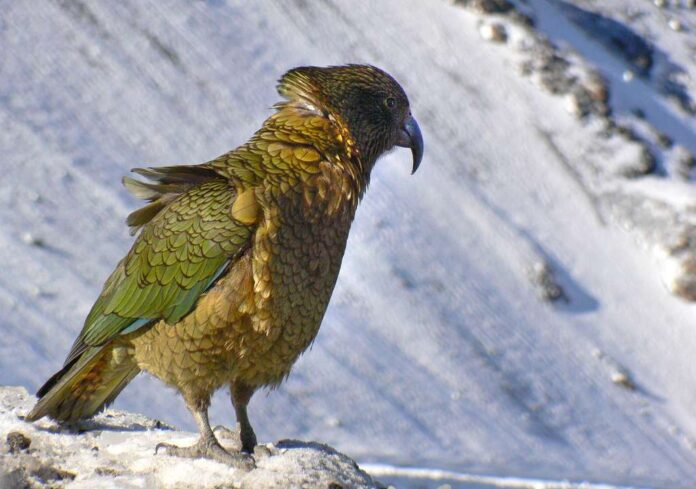
One of the predators of kea eggs and chicks is possums, causing quite a decline in their population. Rats and stoats also pose a great danger to their nests and eggs as well. These parrots nest in holes in the ground, so they face a lot of attacks and raids by other animals.
A significant cause of premature deaths among kea parrots is lead poisoning that comes from buildings. Another reason is 1080 pesticides that people use to control invasive pests like possums and stoats. The pesticide use does not only affect the pests but also many kea parrots in the area. Things are the same for traps set for the pests that also harm kea parrots. Poaching is also one of the reasons that threaten the population of these birds. While it is illegal to kill them, keas are still being shot because of the damage they cause.
Related Post: Dracula Parrot The Goth Bird

